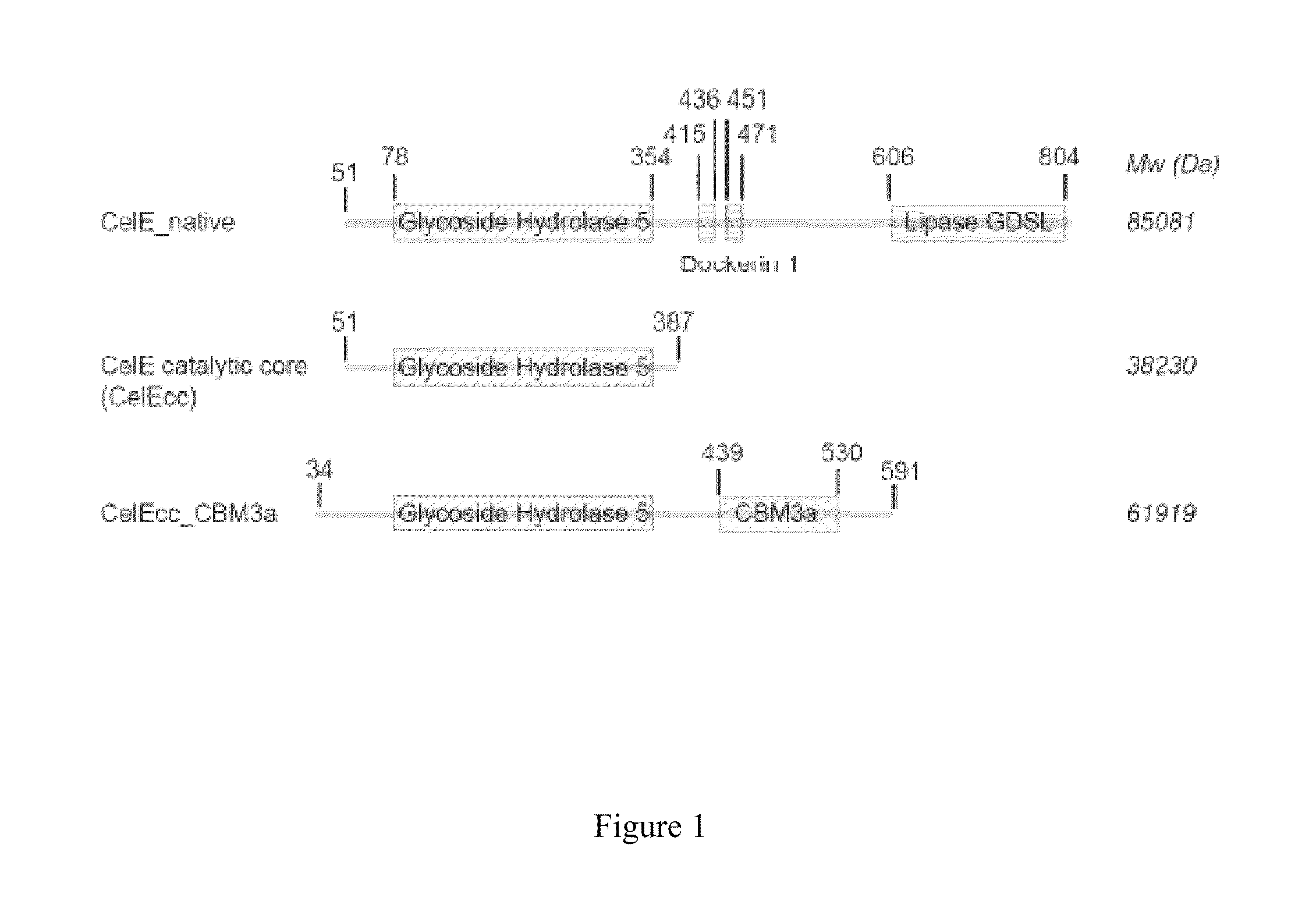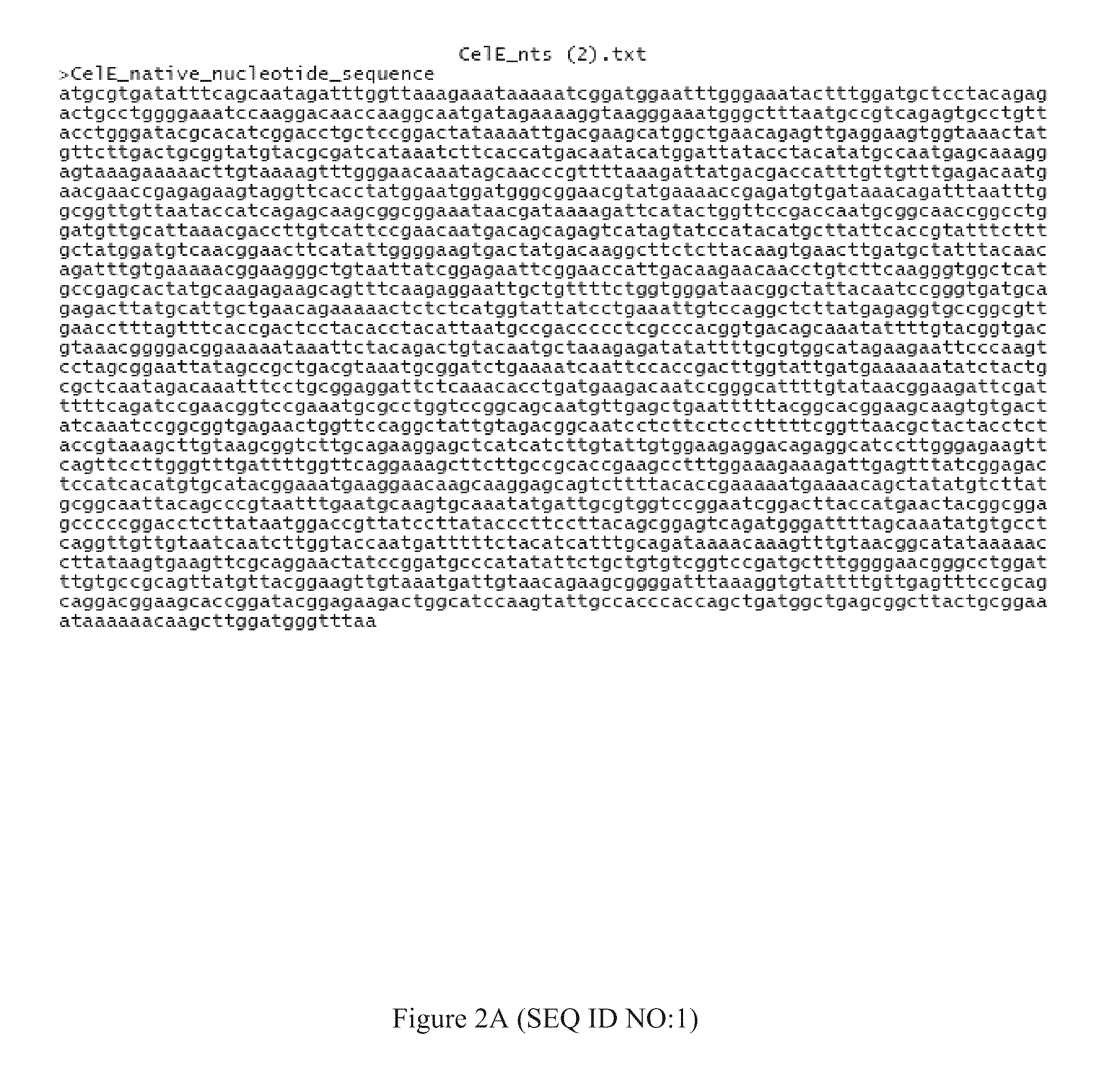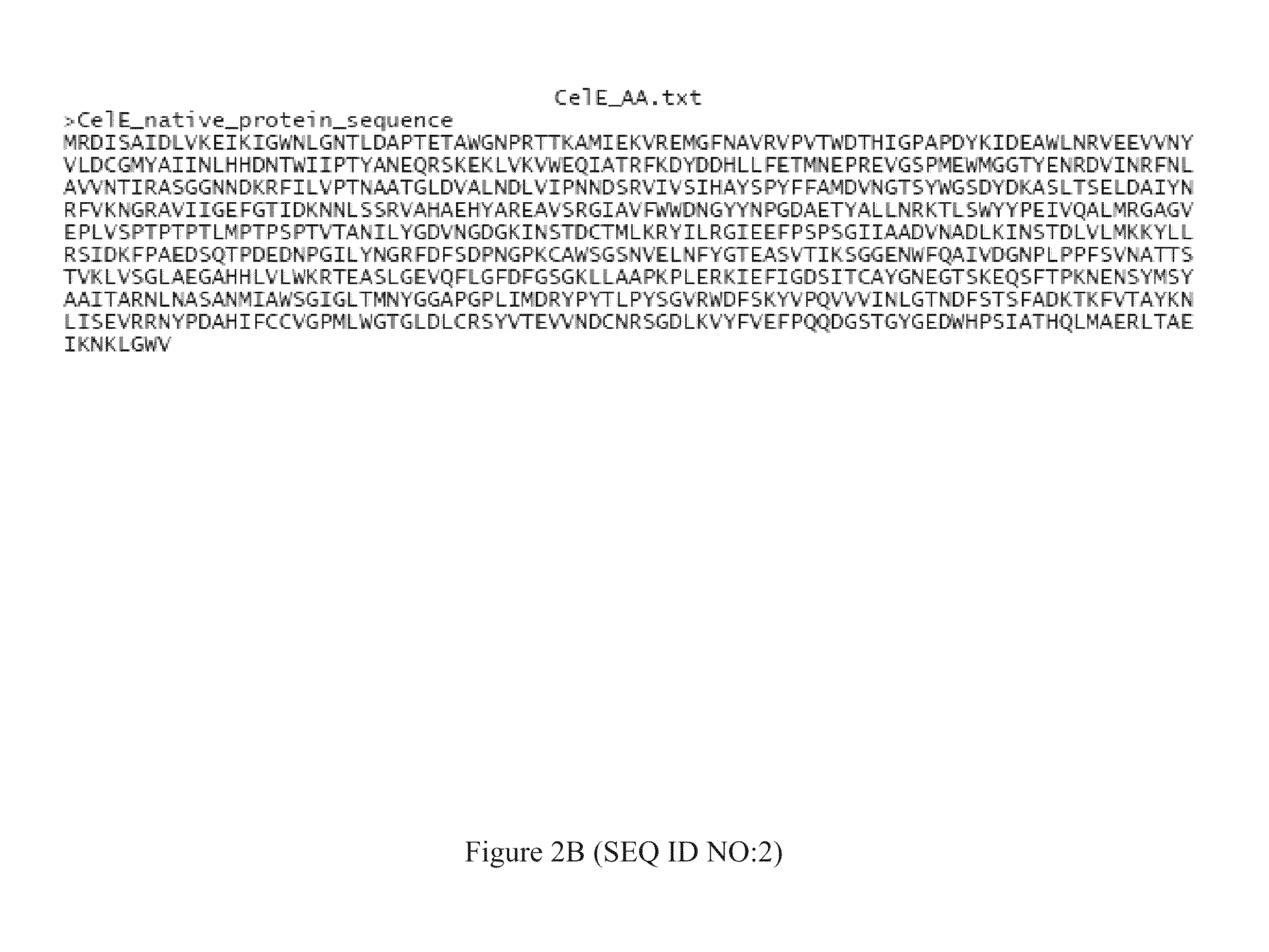Multifunctional cellulase and hemicellulase
a cellulase and multi-functional technology, applied in the field of multi-functional cellulase and hemicellulase, to achieve the effect of specific activity and stability of the cocktail
- Summary
- Abstract
- Description
- Claims
- Application Information
AI Technical Summary
Benefits of technology
Problems solved by technology
Method used
Image
Examples
example 1
The Binding Affinity Assays of Native CelE, CelEcc and CelEcc_CBM3a
[0077]Due to weak binding ability of native CelE and CelEcc to insoluble substrates such as cellulosic materials, xylan, and mannan, it is desirable to produce an enzyme of CelEcc_CBM3a by fusing the catalytic core of the native CelE with a cellulose-specific carbohydrate-binding module (CBM3a) domain. To confirm that the engineered construct of CelEcc_CBM3a has better binding ability with insoluble substrates than native CelE and CelEcc, the experiment of binding affinity assay of native CelE, CelEcc and CelEcc_CBM3a was performed. All constructs of native CelE, CelEcc, and CelEcc_CBM3a were produced by expression in Escherichia coli using an auto-inducing medium containing glucose, lactose, tryptone and yeast extract at 25° C. for 24 hours. The cells were harvested by centrifuging the growth media at 3500 g for 20 minutes, as described in the previous references (Blommel, et al. 2007; Jeon, et al. 2005; Blommel and...
example 2
Catalytic Activities of Native CelE, CelEcc and CelEcc_CBM3a with Cellulose I, Xylan and Mannan
[0079]It was shown that CelEcc_CBM3a has a much stronger binding ability to insoluble substrates than native CelE and CelEcc. Consequently, it was expected that CelEcc_CBM3a would have a much better catalytic reactivity with the insoluble substrates than native CelE and CelEcc. The experiment regarding catalytic activities of native CelE, CelEcc and CelEcc_CBM3a with cellulose I, xylan and mannan, was thus performed. The catalytic reactions were carried out at 60° C., and the reaction time was 20 hours. The experiment was conducted with an amount of 8 mg of enzyme per gram of glucan. The products obtained in the reaction were detected by DNS assay. FIG. 6 showed that native CelE, CelEcc, and CelEcc_CBM3a had different rates and relative activities for hydrolyzing insoluble substrates. As expected, the engineered construct of CelEcc_CBM3a had a catalytic reactivity with phosphoric acid amor...
example 3
Catalytic Activities of CelEcc, Native CelE, CelEcc_CBM3a, CelK, and CelRcc_CBM3a with Either Cellulose I (SIGMACELL-20) or Cellulose III Prepared from SIGMACELL-20 by Extractive AFEX
[0080]Due to the specific binding ability of CBM3a, one would be interested in discovering the catalytic reactivity of the engineered construct of CelEcc_CBM3a with different insoluble substrates. Thus, an experiment regarding catalytic activities of CelEcc, native CelE, CelEcc_CBM3a, CelK, and CelRcc_CBM3a with either cellulose I or cellulose III was performed. Cellulose I was obtained directly as SIGMACELL-20, and cellulose III was prepared from SIGMACELL-20 by extractive AFEX (E-AFEX). CelKcc and CelRcc_CBM3a were produced following the same method and procedure described in U.S. Patent Publication No. 2010 / 0304405, which is incorporated by reference herein. The results were depicted in FIG. 7.
[0081]As shown in FIG. 7, in addition to the increased activity with PASC, CelEcc_CBM3a appeared to have sig...
PUM
| Property | Measurement | Unit |
|---|---|---|
| temperature | aaaaa | aaaaa |
| pH | aaaaa | aaaaa |
| temperatures | aaaaa | aaaaa |
Abstract
Description
Claims
Application Information
 Login to View More
Login to View More - R&D
- Intellectual Property
- Life Sciences
- Materials
- Tech Scout
- Unparalleled Data Quality
- Higher Quality Content
- 60% Fewer Hallucinations
Browse by: Latest US Patents, China's latest patents, Technical Efficacy Thesaurus, Application Domain, Technology Topic, Popular Technical Reports.
© 2025 PatSnap. All rights reserved.Legal|Privacy policy|Modern Slavery Act Transparency Statement|Sitemap|About US| Contact US: help@patsnap.com



